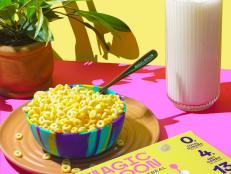Can We Trick Our Noses and Brains Into Enjoying Healthy Food?

Lecic, Lecic
Could the secret to making healthy yet bland dishes taste as decadently delicious as craveworthy comfort foods be as plain as the nose on your face? Quite possibly.
A team of chemists at the French National Institute for Agricultural Research’s Center for Taste and Feeding Behavior, led by Thierry Thomas-Danguin, Ph.D., has developed a device that uses smell to trick the brain into thinking the fat, sugar and salt content of desserts and other foods — the stuff we yearn for even as we try to limit our consumption of it — is much higher than it truly is.
The scientists, who presented their device, the Gas Chromatograph-Olfactometry Associated Taste (GC-OAT), and accompanying research last week at the annual meeting of the American Chemical Society, say they have pinpointed a handful of “natural aromatic molecules” that affect the perception of taste. They then fed those molecules directly back into the noses of study participants using an “olfactoscan” — a device that uses a tube to convey a steady stream of smell into the ol’ schnozzeroo — causing the participants to perceive the flavor of their foods differently in response.
Using this method, the scientists isolated the molecules that made real fruit juice taste sweet and then — after loading the molecules into the olfactoscan and giving subjects a good whiff of them as they ate — created the perception that bland foods tasted sweeter than they truly were.
“Based on our lab work, we’ve come to believe that aromas can help compensate for the reduction of fat, sugar and salt in healthful foods and make them more appealing to consumers,” Thomas-Danguin said in a press release about the study.
This latest study builds on previous work, in which Thomas-Danguin and his colleagues used the smell of ham to fool the brain into thinking a flan tasted saltier than it did. The researchers contend that this may help people eat — and enjoy — healthier foods.
“If you buy a product made with 30 percent less salt, and you don’t like it because it isn’t very tasty, what do you do? You’ll probably reach for the table salt and put some into the product. So the target is missed,” Thomas-Danguin noted. “Our goal is to optimize the reformulation process, so the food industry can produce more healthful products that consumers will like as they are and will choose to eat them regularly.”
Smells — er, sounds — about right.
Photo courtesy of iStock































































